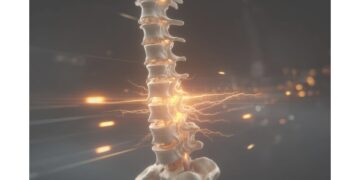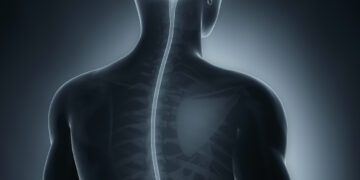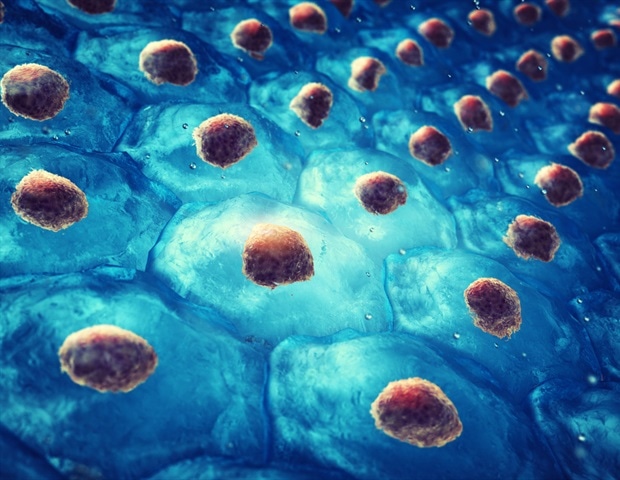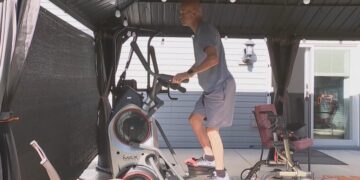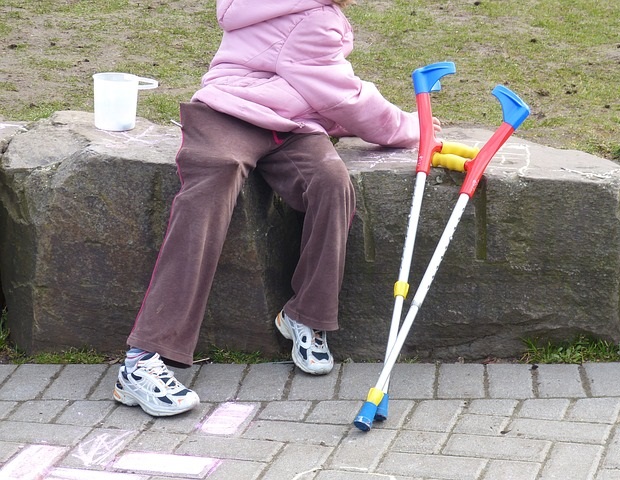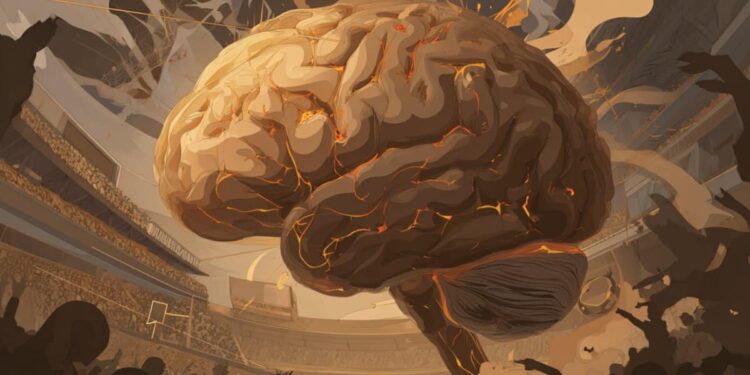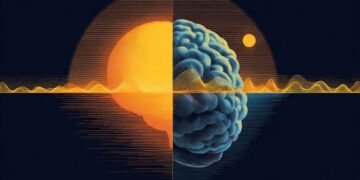Summary: New brain imaging research shows that soccer fans experience rapid changes in reward and self-control circuits when their team wins or loses to a rival. Victories trigger heightened reward responses, while defeats suppress the dorsal anterior cingulate cortex, the brain region responsible for regulating emotions and behavior.
Highly fanatical fans show the strongest imbalance, offering a neural explanation for sudden emotional “swings” during high-risk moments. These patterns may reflect broader mechanisms behind real-world group identity, polarization, and bigotry.
Key facts
Reward increases: Rival team victories trigger strong activation of brain reward networks. Control suppression: Rival defeats suppress dACC activity, reducing cognitive control. Fanaticism Effect: The most devout fans show the most extreme imbalance in brain circuitry.
Source: RSNA
By studying the brain patterns of soccer fans, researchers found that certain regions of brain circuitry were activated while watching soccer games involving their favorite team, triggering positive and negative emotions and behaviors, according to a new study published today in Radiology, a journal of the Radiological Society of North America (RSNA).
The researchers say these patterns could apply to other types of fanaticism as well, and that the circuits are forged early in life.
Football is a global phenomenon and its fans exhibit a wide spectrum of behaviors, from spectatorship to intense emotional engagement, providing a useful model for studying social identity and emotional processing in competitive situations.
Rivalries are deeply rooted in sports history and fans can be very protective of their “home” team and their favorite players.
These same fans run the gamut of emotions as they watch their team succeed or fail over the course of a game or match, cheer when they score, or become enraged over a bad decision. Soccer fans are known for their loyalty and enthusiasm towards the team, particularly in Europe and South America.
“The football fan provides a model of fanaticism of high ecological validity with quantifiable lifelong consequences for health and collective behavior,” said lead author Francisco Zamorano, biologist, Ph.D. in medical sciences from the Clínica Alemana of Santiago and associate professor at the Faculty of Health Care Sciences, Universidad San Sebastián, Santiago, Chile.
“While social affiliation has been widely studied, the neurobiological mechanisms of social identity in competitive environments are unclear, so we set out to investigate the brain mechanisms associated with emotional responses in soccer fans to their teams’ victories and losses.”
For the study, researchers used functional magnetic resonance imaging (fMRI), a technique that measures brain activity by detecting changes in blood flow, to examine 60 healthy male soccer fans (ages 20 to 45) from two historic rivals.
Fanaticism was quantified with the Football Fan Fanaticism Scale, a 13-item scale that measures the fanaticism of football fans, evaluating two subdimensions: “Inclination to violence” and “Sense of belonging.”
Brain imaging data were obtained while participants watched 63 goal sequences from matches involving their favorite team, a rival, or a neutral team. A whole-brain analysis was performed to compare neural responses when participants saw their favorite team score against an archrival (significant victory) versus when the archrival scored against their team (significant loss), with control conditions for non-rival goals.
The fMRI results showed that brain activity changed when the fan’s team succeeded or failed.
“Rivalry rapidly reconfigures the brain’s balance between appraisal and control in a matter of seconds,” Dr. Zamorano said.
“With a significant victory, the reward circuit in the brain is amplified relative to non-rival victories, while in a significant defeat, the dorsal anterior cingulate cortex (dACC), which plays an important role in cognitive control, shows a paradoxical suppression of control signals.”
Paradoxical suppression refers to the attempt to suppress a thought, feeling, or behavior and results in the opposite result.
Greater activation occurred in reward system regions when participants’ teams scored against rivals versus non-rivals, suggesting intra-group bonding and social identity reinforcement.
Dr. Zamorano notes that the effect is strongest in highly fanatical participants, predicting a momentary failure of self-regulation precisely when identity is threatened and explaining the disconcerting ability of otherwise rational individuals to suddenly “flip” in matches.
“Clinically, the pattern implies a state-dependent vulnerability whereby a brief cooling or removal of triggers could allow the dACC/salience control system to recover,” he said.
“The same neural signature (higher reward, lower control in rivalry) likely generalizes beyond sport and into political and sectarian conflicts.”
The neural results identify mechanisms that can inform communication, crowd management and prevention strategies around high-risk events in the amplification of reward and the downregulation of control under conditions of rivalry, Dr. Zamorano noted.
“Studying fanaticism is important because it reveals generalizable neural mechanisms that can range from passion for stadiums to polarization, violence and public health damage at the population level,” he said.
“The most important thing is that these same circuits are forged in the first years of life: the quality of care, exposure to stress and social learning sculpt the balance between valuation and control that then makes individuals vulnerable to fanatical appeals.
“Therefore, protecting childhood is the most powerful prevention strategy. Societies that neglect early development do not avoid bigotry; they inherit its harms.”
Football fans offer an ethical and highly valid indicator to block these processes in the brain and test interventions (framing, fairness signals, event design, crowd management, etc.) that translate into politics, sectarianism and digital tribalism, he noted.
Dr. Zamorano adds that the urgency is evident with today’s global conflicts and political narratives. For example, he said, the Jan. 6, 2021, storming of the U.S. Capitol demonstrated how political bigotry can override democratic norms when the fusion of identities reaches critical mass.
“Participants showed classic signs of compromised cognitive control, exactly what our study found in reduced dACC activation,” Dr. Zamorano said.
“In short, investigating bigotry is not merely descriptive: it is developmentally informed prevention that protects public health and strengthens democratic cohesion. When we talk about bigotry, the facts speak for themselves.”
Key questions answered:
A: Victories amplify reward circuits, while defeats suppress cognitive control regions like the dACC.
A: High fanaticism intensifies reward surges and drops in control, creating a brief vulnerability to impulsive behavior.
A: Yes. The same signature of reward above and control below can underlie political and sectarian fanaticism.
About this neuroscience research news
Author: Linda Brooks
Source: RSNA
Contact: Linda Brooks – RSNA
Image: Image is credited to Neuroscience News.
Original Research: Closed access.
“Brain mechanisms across the spectrum of soccer fan participation: a functional neuroimaging study” by Francisco Zamorano et al. Radiology
Abstract
Brain Mechanisms Across the Engagement Spectrum of Football Fans: A Functional Neuroimaging Study
Background
Football (also called soccer) is a global phenomenon and its fans exhibit a wide spectrum of behaviors, from spectatorship to intense emotional engagement, providing a useful model for studying social identity and emotional processing in competitive contexts. Although social affiliation has been widely studied, the neurobiological mechanisms of social identity in competitive environments are unclear.
Aim
To investigate the brain mechanisms associated with the emotional responses of football fans to their teams’ victories and losses using functional magnetic resonance imaging.
Materials and methods
This prospective study was conducted from April 2019 to October 2022 and included healthy male football fans who underwent brain fMRI. Based on scores from the Football Fan Fanaticism Scale, participants were classified as spectators, fans, or fans. Functional neuroimaging data were acquired while participants watched 63 goal sequences from matches involving their favorite team, a rival, or a neutral team.
A whole-brain analysis was performed using a general linear model to compare neural responses when the participant’s favorite team scored against an archrival (significant win) versus when the archrival scored against their team (significant loss), with control conditions for nonrival goals. Multiple comparison corrections were performed by cluster correction using random field theory.
Results
Sixty-one male football fans between the ages of 20 and 45 participated in this study. Whole-brain analysis of blood oxygenation level-dependent signal intensity and group-level correction revealed that significant victory was associated with greater activation in the ventral striatum, medial prefrontal cortex, and fusiform face area, reflecting reward processing and social identity reinforcement.
Significant defeat was associated with greater activation of the mentalizing network, visual areas, and precuneus, with less activation in the dorsal anterior cingulate cortex, suggesting changes in cognitive control and emotional regulation.
Conclusion
Soccer fans demonstrated activation in regions of the brain’s reward system when their team scored against rival teams compared to other teams, reflecting within-group bonds and reinforcement of social identity.

